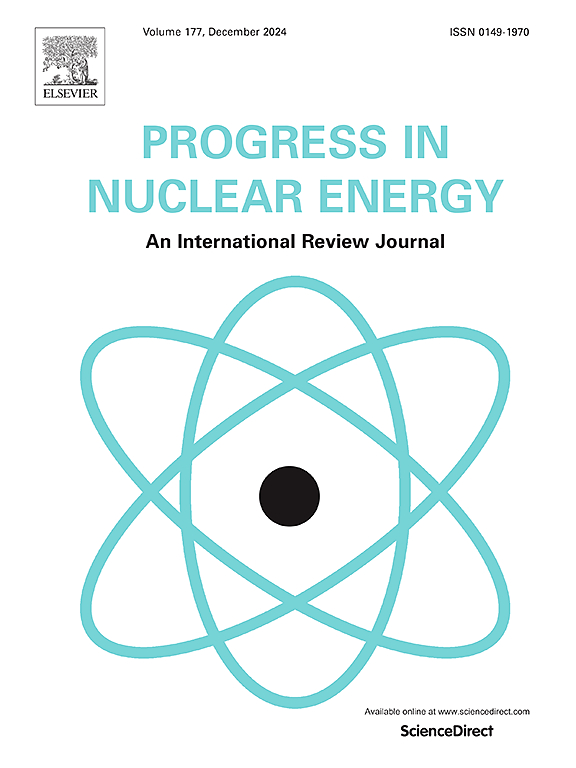Corrosion mechanisms and differences of Inconel 617 and Incoloy 800H under high-temperature air ingress accident
IF 3.3
3区 工程技术
Q1 NUCLEAR SCIENCE & TECHNOLOGY
引用次数: 0
Abstract
In the high-temperature operation of very high-temperature gas-cooled reactors (VHTRs), "microclimate reaction" are one of the key corrosion reactions of concern. This study investigates the corrosion behavior and mechanisms of the two mainstream high-temperature alloys, Incoloy 800H and Inconel 617, under minor air ingress accidents. The main focus is on comparing and analyzing the "microclimate reaction" corrosion behavior and mechanisms of the two alloys, as well as exploring changes in their mechanical properties. The results show that during the experiment, both alloys primarily underwent oxidation and "microclimate reaction". The double-layer oxide of Cr2O3-MnCr2O4/MnFe2O4 and the SiO2 layer on the surface of Incoloy 800H provide good resistance to "microclimate reaction," whereas the single-layer Cr2O3 oxide on Inconel 617 is not effective in preventing "microclimate reaction". The mechanical property test results indicate that the decarburization of the alloy caused by the "microclimate reaction" does not significantly affect the overall basic mechanical properties of the alloy on a macroscopic level. Research on the "microclimate reaction" should primarily focus on preventing the oxide layer from cracking and reducing the time during which the alloy matrix is unprotected by a stable oxide layer.
求助全文
约1分钟内获得全文
求助全文
来源期刊

Progress in Nuclear Energy
工程技术-核科学技术
CiteScore
5.30
自引率
14.80%
发文量
331
审稿时长
3.5 months
期刊介绍:
Progress in Nuclear Energy is an international review journal covering all aspects of nuclear science and engineering. In keeping with the maturity of nuclear power, articles on safety, siting and environmental problems are encouraged, as are those associated with economics and fuel management. However, basic physics and engineering will remain an important aspect of the editorial policy. Articles published are either of a review nature or present new material in more depth. They are aimed at researchers and technically-oriented managers working in the nuclear energy field.
Please note the following:
1) PNE seeks high quality research papers which are medium to long in length. Short research papers should be submitted to the journal Annals in Nuclear Energy.
2) PNE reserves the right to reject papers which are based solely on routine application of computer codes used to produce reactor designs or explain existing reactor phenomena. Such papers, although worthy, are best left as laboratory reports whereas Progress in Nuclear Energy seeks papers of originality, which are archival in nature, in the fields of mathematical and experimental nuclear technology, including fission, fusion (blanket physics, radiation damage), safety, materials aspects, economics, etc.
3) Review papers, which may occasionally be invited, are particularly sought by the journal in these fields.
 求助内容:
求助内容: 应助结果提醒方式:
应助结果提醒方式:


